ANNOUNCING SHORT-LIST FOR THE 2014 PHOTOBOOK AWARDS
New York and Paris, September 26, 2014.
Todd Hido, photographer and photobook maker greeted an eager crowd at the New York Art Book Fair to announce the thirty-five outstanding photobooks short listed for the 2014 Paris Photo–Aperture Foundation PhotoBook Awards.
Todd Hido, photographer and photobook maker greeted an eager crowd at the New York Art Book Fair to announce the thirty-five outstanding photobooks short listed for the 2014 Paris Photo–Aperture Foundation PhotoBook Awards.
THE TEN SHORT LISTED FOR PHOTOBOOK OF THE YEAR ARE:
The Big Book
Photographer: W. Eugene Smith
Publisher: University of Texas Press
Photographer: W. Eugene Smith
Publisher: University of Texas Press
Rich and Poor
Photographer: Jim Goldberg
Publisher: Steidl
Photographer: Jim Goldberg
Publisher: Steidl
Disco Night Sept. 11
Photographer: Peter van Agtmael
Publisher: Red Hook Editions
Photographer: Peter van Agtmael
Publisher: Red Hook Editions
Marrakech
Photographer: Daido Moriyama
Publisher: SUPER LABO
Photographer: Daido Moriyama
Publisher: SUPER LABO
Photographs for Documents
Photographer(s): Vytautas V. Stanionis
Publisher: Kaunas Photography Gallery
Photographer(s): Vytautas V. Stanionis
Publisher: Kaunas Photography Gallery
Ponte City
Photographers: Mikhael Subotzky and Patrick Waterhouse
Publisher: Steidl
Photographers: Mikhael Subotzky and Patrick Waterhouse
Publisher: Steidl
Vertigo
Photographer(s): Daisuke Yokota
Publisher: Newfave
Photographer(s): Daisuke Yokota
Publisher: Newfave
Imaginary Club
Photographer(s): Oliver Sieber
Publisher: Editions GwinZegal/BöhmKobayashi
Photographer(s): Oliver Sieber
Publisher: Editions GwinZegal/BöhmKobayashi
The Winners
Photographer(s): Rafal Milach
Publisher: GOST
Photographer(s): Rafal Milach
Publisher: GOST
The Arrangement
Photographer(s): Ruth van Beek
Publisher: RVB Books
Photographer(s): Ruth van Beek
Publisher: RVB Books
The Arrangement is a group of images Ruth Van Beek made with a collection of books on flower arranging. She has been collecting books on this subject for years, mostly instructional books dating from the fifties to the seventies. They combine colorful still lifes of flower arrangements with the functional photography of a manual. Ruth Van Beek is specially interested in the translation of the strict rules and symbols of Japanese Ikebana into instructional books for Dutch housewifes.
Ones to Watch: Ruth van Beek
Ruth van Beek has been selected as one of BJP’s 20 photographers to watch in 2013
Author: British Journal of Photography
14 Jan 2013
From cute bunnies folded into weird, anamorphic creatures, to houseplants covered in crudely cut out snow formations, Ruth van Beek’s work covers a wide range of subjects, but is united by the common medium of collage. Taking images from old newspapers, photo albums and books, her work is concerned with “the photograph as an object”.
Born in the Netherlands in 1977, van Beek graduated from the Gerrit Rietveld Academy in Amsterdam 25 years later, and in the decade since has completed nearly 50 series of work, most based on vernacular imagery. “I take out the images and free them from their original context, but their origin is still important to me,” she says. “What really attracted me was that their stories had disappeared; the pictures had become anonymous, and therefore totally free for me to use in my own stories. But besides that, the similarity in the albums is striking – all those boring parties and lovely grannies formed the perfect scenery for my own stories.
“The newspaper archive is kind of the opposite of this intimate family life. I collected disaster photos for a long time, especially pictures of plane wrecks. I was always fascinated by the look of a crashed plane, like a huge whale stranded on the beach. Later I began collecting old books and cut them apart. People used to love books, now second-hand shops are full of them because we have the internet, and all this information is always there, at the ready. Books became superfluous. Books on travelling, wildlife, adventures, and instructional books on cooking, gardening and housekeeping – what I like about them is that they are meant to teach stuff to people, instruct them on how to live a good life.”
She thinks of her entire oeuvre as “a big encyclopedic series showing a hidden world within existing photography”; the images reproduced here are taken from a new series called the arrangement, which was made on commission for the Amsterdam Academic Hospital. Given a huge vitrine for which she could make whatever she wanted, van Beek “immediately thought about doing something with flowers, since it is a tradition to bring flowers to a sick person”. The images come from 1950s flower-arranging guides and Japanese Ikebana books, which were popular in The Netherlands in the 1970s, but van Beek has covered parts of the image in painted paper to subvert these stiff bouquets and invent her own kind of still life arrangement. “The more I worked on this, the more they started to become animated,” she continues. “The arrangements became like small beings – for me they are very much alive, they’re there to give comfort.”
As with many of her previous projects, van Beek aims to make the series into a book, which will be published this summer by RVB Books in Paris. She’s also working on a more ambitious, long-term project, “which will function as a kind of manual for my work and archive”. It will take the form of a series of publications, the first of which van Beek will publish herself soon.
Books are an essential part of her practice. She’s previously made limited edition, handmade books, and something more conventional, The Hibernators, published with RVB Books. “A book can be about information as well as stories and fiction. I like to make books that have the suggestion of function and archive, but make no sense and thereby become unfamiliar and mysterious. A book is like a house for a photograph, and the small-edition books are little experiments,” she says. “Most of the images I use in my work come from books – I cut them apart and the books disappear, so I like to give the images back in a new book.”
THE TWENTY SHORTLISTED TITLES FOR FIRST PHOTOBOOK ARE:
everything will be ok
Photographer: Alberto Lizaralde
Publisher: Self-published
Photographer: Alberto Lizaralde
Publisher: Self-published
Synonym Study
Photographer: Nico Krijno
Publisher: Self-published
Photographer: Nico Krijno
Publisher: Self-published
The Meteorite Hunter
Photographer: Alexandra Lethbridge
Publisher: Self-published
Photographer: Alexandra Lethbridge
Publisher: Self-published
Father Figure: Exploring Alternative Notions of Black Fatherhood
Photographer: Zun Lee
Publisher: Ceiba
Photographer: Zun Lee
Publisher: Ceiba
19.06_26.08.1945
Photographer: Andrea Botto
Publisher: Danilo Montanari
Photographer: Andrea Botto
Publisher: Danilo Montanari
Miklós Klaus Rózsa
Photographer: Christof Nüssli and Christoph Oeschger
Publisher: Cpress/Spectorbooks
Photographer: Christof Nüssli and Christoph Oeschger
Publisher: Cpress/Spectorbooks
ED IT: The Substantial System for Photographic Archive Maintenance
Authors: Ola Lanko, Brigiet van den Berg, Nikki Brörmann, Simone Engelen, Sterre Sprengers
Publisher: Self-published
Authors: Ola Lanko, Brigiet van den Berg, Nikki Brörmann, Simone Engelen, Sterre Sprengers
Publisher: Self-published
Back to the Future
Photographer: Irina Werning
Publisher: Self-published
Photographer: Irina Werning
Publisher: Self-published
Inventio
Photographer(s): Yann Haeberlin
Publisher: Self-published
Photographer(s): Yann Haeberlin
Publisher: Self-published
Euromaidan
Photographer(s): Vladyslav Krasnoshchok and Sergiy Lebedynskyy
Publisher: Riot Books
Photographer(s): Vladyslav Krasnoshchok and Sergiy Lebedynskyy
Publisher: Riot Books
Silent Histories
Photographer: Kazuma Obara
Publisher: Self-published
Photographer: Kazuma Obara
Publisher: Self-published
Hidden Islam
Photographer: Nicoló Degiorgis
Publisher: Rorhof
Photographer: Nicoló Degiorgis
Publisher: Rorhof
Sequester
Photographer: Awoiska van der Molen
Publisher: Fw: Books
Photographer: Awoiska van der Molen
Publisher: Fw: Books
Bewitched by blackness: photographing the desolate beauty of the Canaries
Awoiska van der Molen wandered the Canary Islands alone, taking long-exposure shots of the hills at dawn and painstakingly printing them on old-fashioned silver gelatin paper. The breathtaking results form the basis of Sequester, a meditation on the poise and patience of nature
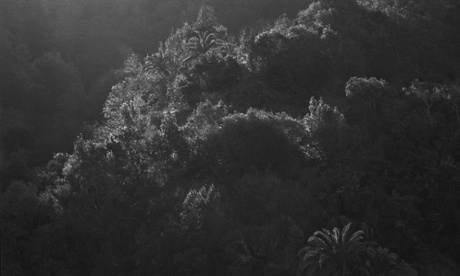
In his illuminating book of essays, The Pleasures of Good Photographs,Gerry Badger speaks of “the quiet photographer” who is unusually attentive to “the thereness of things and places”. Badger was referring to the work of Stephen Shore, who once declared photography “an exercise in attention” and “an art that calls forth intelligence, concentration and delicacy”.
These quotes came back to me when I first encountered the Dutch photographer Awoiska van der Molen’s work at a group show calledNatural Order back in June.
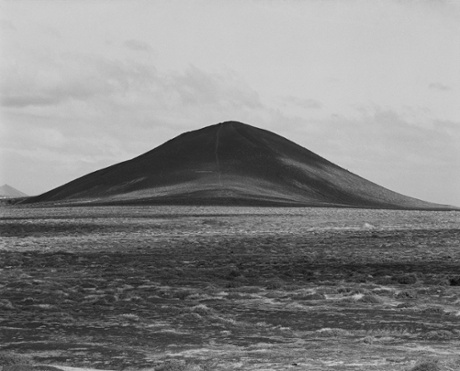
Now comes her first photobook, Sequester, which is laden with an inordinate sense of silence. Her monochrome landscapes, made using long exposures at dusk or early morning, alert us in their meditative way not just to the thereness, but also to what James Joyce called the “whatness” of things.
Van der Molen favours out-of-the-way places – the volcanic landscapes of the smaller Canary Islands loom large in her book. She spent long periods of time there alone, honing not just her craft but the sense of isolation needed to “gain access to the stoic nature of the landscape”, as she so memorably puts it.
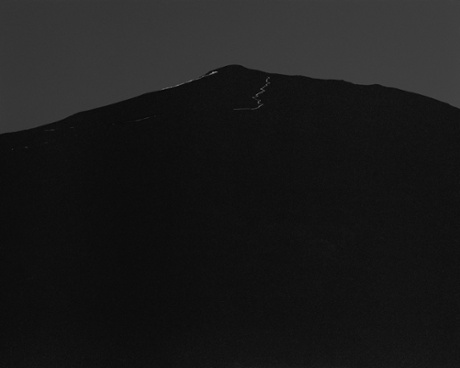
Here is a photographer that is infinitely patient, and interested in the stubborn core of things. Her images are captured in single exposures of up to half an hour, then painstakingly printed in her darkroom on large format, silver gelatin paper. The methodology is unapologetically old-fashioned, and the results extraordinary powerful.
In one of my favourite shots, a black mountaintop looms out of the slate-grey darkness, two wavy white lines flowing from the peak like moonlit streams. Astonishingly, these are light trails made by two groups of nocturnal hikers, which she managed to capture from a distance thanks to long exposure. You do not need to know this to appreciate its haunting beauty, but it alerts us to the delicacy of her transformative art.
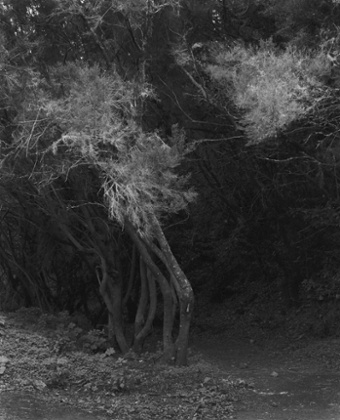
Elsewhere, the flowery braces of tall trees or a mass of feathery fronds emerge from a darkness that is deep spatially and atmospherically. You can almost hear the rustle of the mountain breeze. You often feel you could be looking at a different planet: volcanic rock seems lunar; cliffs give way to ominously dark voids that could be the edge of the world; surfaces look alien with their odd shadows and crevices. In one startling shot, a huge peak rises out of a barren plain, with a single line of grey – a walking track, perhaps – traced as if by hand over its brow.
The book is beautiful, but it is worth trying to see her work in a gallery, where the detail of the silver gelatin prints adds to the palpable sense of emptiness and isolation. She has just won the grand prize of the Japanese Hariban award, which allows her to travel to Kyoto to study colloidal printing with the master craftsmen of the Benrido Collotype Atelier.
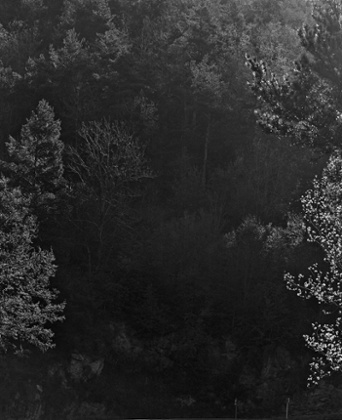
One senses that, for Van der Molen, photography is like a metaphysical quest, a journey to the essence of things. Her images take me back to Nan Shepherd’s classic book The Living Mountain, which recounts, in luminous prose, the Scottish writer’s lifelong fascination with the Cairngorms as a physical and spiritual landscape. In it, she writes of her solitary walking and looking: “It is a journey into Being: for as I penetrate more deeply into the mountain’s life, I penetrate also into my own. For an hour I am beyond desire ... I am not out of myself, but in myself. I am. To know Being, that is the final grace accorded from the mountain.” That grace exists, too, in these quiet photographs of a world both desolate and beautiful.
The American Series
Photographer: Oskar Schmidt
Publisher: Distanz
Publisher: Distanz
Fractal State of Being
Photographer: Sara Skorgan Teigen
Publisher: Journal
Photographer: Sara Skorgan Teigen
Publisher: Journal
Spasibo
Photographer: Davide Monteleone
Publisher: Kehrer Verlag
Photographer: Davide Monteleone
Publisher: Kehrer Verlag
Red String
Photographer: Yoshikatsu Fujii
Publisher: Self-published
Photographer: Yoshikatsu Fujii
Publisher: Self-published
War Porn
Photographer: Christoph Bangert
Publisher: Kehrer Verlag
Photographer: Christoph Bangert
Publisher: Kehrer Verlag
Jannis
Photographer: Alma Cecilia Suarez
Publisher: Self-published
Photographer: Alma Cecilia Suarez
Publisher: Self-published
Photograph
Photographer: Yuji Hamada
Publisher: Lemon Books
Photographer: Yuji Hamada
Publisher: Lemon Books
THE FIVE SHORT LISTED TITLES FOR PHOTOGRAPHY CATALOGUE OF THE YEAR ARE:
Photobooks: Spain 1905–1977
Photographers: Multiple
Publisher: Editorial RM
Publisher: Editorial RM
Christopher Williams: Printed in Germany
Photographer: Christopher Williams
Publisher: Walther König/David ZwirnerChristopher Williams: The Production Line of Happiness Photographer: Christopher Williams
Publisher: Art Institute of Chicago
Photographer: Christopher Williams
Publisher: Walther König/David ZwirnerChristopher Williams: The Production Line of Happiness Photographer: Christopher Williams
Publisher: Art Institute of Chicago
Dark Knees
Photographer: Mark Cohen
Publisher: Le Bal/Éditions Xavier Barral
Photographer: Mark Cohen
Publisher: Le Bal/Éditions Xavier Barral
Tsunami, Photographs, and Then: Lost and Found Project
Photographer: Munemasa Takahashi
Publisher: AKAAKA
Photographer: Munemasa Takahashi
Publisher: AKAAKA
The Catalogue Box
Photographers: Multiple
Publisher: Verlag Kettler/The PhotoBook Museum
Photographers: Multiple
Publisher: Verlag Kettler/The PhotoBook Museum
This year’s short list selection was made by Julien Frydman, director of Paris Photo; Lesley A. Martin, publisher of the Aperture book program and of The PhotoBook Review; Mutsuko Ota, editorial director of IMA magazine; and Anne Wilkes Tucker, photography curator.
The thirty-five selected photobooks will be exhibited at Paris Photo in the Publishers Space. A final jury in Paris will select the winners for all three prizes, which will be revealed on November 14, 2013. The winner of First PhotoBook will be awarded $10,000.






















Geen opmerkingen:
Een reactie posten